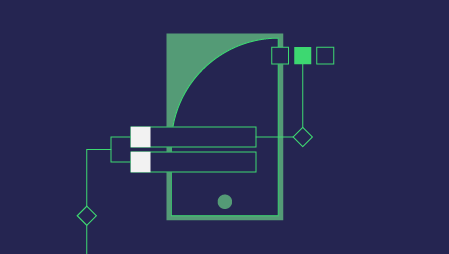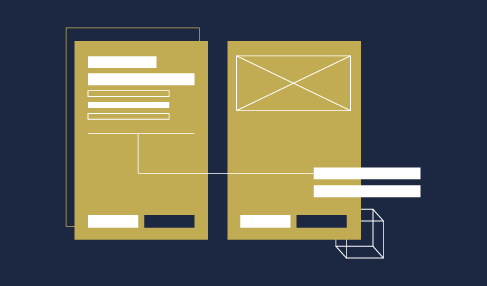
TL;DR: Your body is the interface between you and the world around you. The part of your brain that is reading this gets all outside information through a series of interfaces. Everything you know about the world has been filtered and translated and turned into things you are ready to believe. Everything you remember is a story you’re making up as you go along.
Today we’re going to take a look at how your brain lies to you about everything, and how we turn those lies into useful information. Don’t worry, most of the time those lies serve a good purpose. Now, some of you may be thinking that means that some of the time those lies don’t serve a good purpose at all. Very good. That’s absolutely correct. We’ll come back to that in a little while.
We cannot consciously deal with all of the information we sense. We’ve evolved a few strategies for dealing with that.
The first is that all of our senses have very limited ranges. We can only see, hear, smell, and feel a small percentage of the light, noise, odours, and pressures whose chemical forces interact with ours every moment of every day.
Humans only see about 0.0036% of the light that shines and reflects around us. We can only detect sounds that vibrate our eardrums at frequencies between 20 and 20,000 Hz. Dogs and cats can hear higher sounds that vibrate at twice that rate, and dolphins can hear sounds that vibrate four times faster than that, up to about 160,000 Hz.
The second is that we are ridiculously good at ignoring most of the things that do collide with us. It can be comforting to gently rub your thumb and first two or three fingers against each other. That’s a basic comforting action that babies use intuitively to soothe themselves. In fact, it’s been observed that other primate babies do the same thing. Doing that with a piece of smooth or interestingly-textured cloth can feel even better. Try it now with a fold of the clothing you’re wearing. Close your eyes, if you want, and savour the details of the touch: how the cloth slides, the patterns of the edges or seams.
Now imagine that you felt that much detailed information from every piece of clothing you are wearing over every part of your skin. The entire length of your shirtsleeves and everywhere the collar touches your neck, shoulders and chest! The legs of your trousers or the entire breadth of your dress, skirt or leotard! Your socks and shoes and hat! Imagine if you never stopped feeling the friction of your glasses against your ears and nose, or the pressure of your contact lenses!
Thank goodness we can ignore most of our sensory data! And that’s only the external data. We can feel the stretching of almost all of our roughly 600 muscles, and almost every rotation of almost all of our 206 bones. What would life be like if we couldn’t ignore any of that?
The third strategy that we have evolved for mitigating sensory overload is a sort of shortcut. If we can’t avoid or ignore a flood of sensory input, then we avoid trying to decode and process it. This strategy enables us to make decisions more quickly than we can think. Basically, we unconsciously “assume” that everything we sense fits into what we expect. We live in a story that we are actively telling ourselves, and our first perception of any sensory data is our perception of how well or how poorly it fits into that story.
This way, instead of having to process constant streams of raw data, we process that data in complex but unconscious ways, so that it either supports or interrupts the story we are telling ourselves.
It’s a lot like the dashboard on your car. The vehicle has sensors that can detect how quickly its wheels are turning, but it doesn’t show you that. Instead, that data is combined with the size of your tires to calculate the speed you are going, and that information is displayed on your dashboard. Instead of showing you raw data, it shows you secondary, derived data that can fit into the story you tell yourself about the performance of your car.
Think how much harder driving would be if you had to take the raw data and do the math in your head… while navigating, following the rules of the road, reading traffic signs, and ignoring the conversation of the people sitting next to and behind you, all while keeping a close eye on all of the other struggling drivers around you.
And this brings us back to the simple truth that, even though this process allows us to interact in real-time with a ridiculously complex world, sometimes the oversimplification causes us to miss important information. Sometimes those lies we tell ourselves result in catastrophe.
The most common type of accident between a motorcycle and a car is often referred to as a “looked, didn’t see” accident. This is when the driver of a car moves into a lane occupied by a motorcycle. Often, the driver has looked directly into the lane – directly at the motorcycle – but has failed to see them. This is due to the overlap of two types of cognitive bias called “change blindness” and “the Von Restorff effect.” Basically, the driver of the car expected the lane to be clear and so – barring a really outstanding signal to the contrary – that is all that they could see.
If you stand on a busy street corner, you can usually see many lower-speed and hopefully-less-serious versions of this. People who are focussed on their smartphones and not on the world around them often walk into each other, into stationary objects, into open manholes, and into traffic. If they survive, they usually think that they have done nothing wrong. They claim that the motorcycle or the manhole “came out of nowhere.” This is simply a side effect of how we have learned to use our ridiculously complex sensory system to navigate through a ridiculously complex world.
Everything detected by every one of our senses gets translated into an existing story before we perceive it. Most of the information gets edited out before the story is written, and most of what’s left get summarised so compactly that you can’t decipher which sense it came from. But, as a result, we usually only notice as much information as we can process.
This allows us to function and interact with the world around us. But please try to remember that it’s a world that is being translated in real-time. We don’t interact with the original.
Next time,
Next time we’ll talk about the fourth strategy – the one that only gets used in emergencies.





